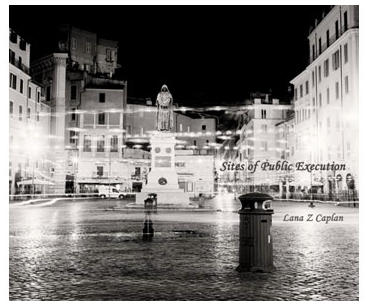For the last week or so, I have been yammering on about the dangers of including too much physical description of your characters and/or backstory in your interview scenes, particularly in ones near the opening of the book. (If you have not given a physical description of your protagonist or some insight into her primary relationships by page 182, the manuscript has a different problem.) Within this context, I asserted — perhaps rashly — that conversation where Person A describes Person B’s physical attributes TO Person B are relatively rare.
It hit me in the wee hours, however, that I had neglected to mention the primary real-life situation where speakers ROUTINELY engage in this sort of banter: people in the first throes of being in love. Especially if one or both are in love for the first time, their vocal cords are likely to emit some otherwise pretty unlikely dialogue. As in:
“Wow, your eyes are SO blue, Snuggums!” (Giggle.)
“Your nose is adorable, Muffin. I love that little freckle right there especially.” (Smack.)
“Who’s a little snuggle bunny? Is it you? Is it?”
Or the ever-popular:
“Do you love me?”
“Of course I love you. Do YOU love ME?”
“How can you even doubt it? I love you twice as much every time I blink. You can’t possibly love me even half as much as I love you.”
“That can’t be true, because I already love you five times more than anyone has ever loved anyone else.”
“Oh, darling, what a wonderful thing to say. I love you so much.”
“And you know what? I love you.”
Zzzz…oh, pardon me; I must have been indulging in a well-deserved nap until something actually happened during this love scene.
Do I sound cynical? Actually, I have nothing against love, in principle — truly, I don’t. It has produced some fairly spectacular poetry, and most of the human race.
But allow me to suggest that this particular species of conversation, even when spoken live, is properly only interesting to Snuggums and Muffin themselves.
Why? Well, it’s just a TAD conceptually repetitious, is it not? Not to mention the fact that entirely self-referential dialogue becomes intensely boring to any third-party listener with a rapidity that makes the average roller coaster ride seem languid by comparison.
Don’t believe me? Tag along on a date with two people (or heck, three or four) deep in the grip of the early stages of infatuation with each other and count the seconds until the quotidian problems of which way to hang the toilet paper roll and not being able to sleep for more than five consecutive minutes before being awakened by a snore that would put Godzilla to shame have reared their ugly heads.
And I would bet as much as a nickel that the rest of the conversation won’t be significantly more scintillating.
It can be equally deadly on the page — but naturally, as writers, when we write about the enamored, we want to capture that breathless feeling of discovery inherent in infatuation.
Nothing wrong with that, if it’s done well. Yet in print, rhapsodies on eyes of blue all too often produce prose of purple:
“Tiffany, your eyes are the most astonishing color, blue like Lake Tahoe on a cloudless day. Not a cloudless day in midwinter, mind you, when you might drive by the lake on your way to a ski slope, but the blue of midsummer, of long, dreamy days on Grandfather’s boat. Or still later, when you and I were in junior high school, and our parents shipped us off to that Episcopalian summer camp — the one that used the 1929 prayer book, not the modern edition — when we swam beneath skies of azure…”
True, someone MIGHT conceivably say something like this in real life, but let’s not kid ourselves here: you’d have to be Charles Boyer to pull off a speech like this without prompting gales of laughter in Tiffany and bystander alike.
Generally speaking, extensive physical descriptions like this work far, far better in narration than as dialogue. Most people already have some fair idea what they look like: while it’s always nice to be told that one is pretty (anyone? anyone?), one seldom needs to be told that one is 5’6″, even if that is indeed the case.
In fact, mentioning the latter fact in real life might actually engender some resentment. Height and weight are the two self-descriptors about which the average person is most likely to — well, let’s be generous and not call it lying; how about equivocating?
I find this kind of misrepresentation fascinating, as it so seldom fools anyone. Most people would never dream of perjuring themselves about their eye color on a driver’s license application— but don’t most people subtract a few pounds, or perhaps 30 or 40, on general principle, on the same form?
While we’re on the subject of doubting self-serving statements, aren’t personal ads living proof that many people are, at best, rather optimistic about their height? Don’t we all get at least a vague sense that the average movie star’s date of birth is somewhat variable, when she admitted to being five years older than we are when her first movie came out, and yet asserts that she is three years younger now?
Can’t we all live with that? I mean, River Phoenix’s four years at nineteen were good years for all of us, weren’t they?
Ethically, I don’t have much of a problem with these harmless little pieces of self-aggrandizement; for the most part, they’re victimless crimes. (“That’s he, officer — he says he’s six feet tall, but he’s 5’9″ in his stocking feet!”) In fact, being aware of this tendency can add a certain piquancy to an interview scene.
Love scenes in particular. I hate to seem cynical, but is it entirely beyond the bounds of probability the Boyer-wannabe above might have slightly exaggerated the blueness of Tiffany’s eyes for romantic effect?
In other words, what if instead of depicting your infatuated lovers commenting upon the REAL physical attributes of one another, the dialogue made it plain that a certain amount of hyperbole was going on? Or if one professed blindness to a physical defect in the other?
Such a scene might not provide just-the-facts-ma’am physical descriptions of the characters, but it might conceivably be more character-revealing — and more interesting to the reader — than the transcripts of either sweet nothings or undiluted praise.
If a writer REALLY wanted to get tricky, the narrative might not even make it clear in the moment precisely how and why Lover A is choosing to lie to Lover B. Conveying a subtle sense that there’s something more going on in this scene than meets the enamored eye is a great to increase tension.
Provided, of course, that the narrative doesn’t immediately stab the rising conflict in the heart by explaining in minute detail precisely what’s going on. This has been the death blow to many a promising love scene.
What do I mean by this, you ask? Let’s take a look at a scene where mixed motives have been handled with restraint.
Angelica backed off slightly, instinctively when Desmond kissed her, but lips pressed to hers, he failed to notice. Or if he did, any qualms he may have had were soon quelled by her enthusiastic embraces.
After a few minutes’ slurping passion, she loosed her lips enough to ask, “When do you need to be back at the White House, darling?”
He toyed with the come-hither straps of her meter maid uniform. “Not until half-past one. And even if I’m late, the republic won’t fall if the President gets his security briefing is a few minutes behind schedule.”
Angelica sighed, pulling him closer. “Promise me that I’ll always be more important to you than national security.” She glanced over his shoulder at the alarm clock. “Right now, I feel as though we’re the only two human beings left on earth.”
“Oh, sweetheart,” he murmured into her shapely neck.
Gives a pretty strong impression that Angelica’s motives in pursuing the tryst might not be identical to his, doesn’t it? The slight tension between her actions and her words convey that easily, without a lot of heavy-handed justification or acres of internal monologue.
Which, alas, is how many manuscript submissions would have approached it. Here’s a sample — note all of the named emotions, explanations through thought, and just how quickly the reader’s ability to speculate about what might be going on evaporates:
Oh, God, Angelica thought, stunned by the onslaught of Desmond’s cologne, not again. Didn’t this lummox ever think of anything but sex, sex, sex? Still, she had been ordered to keep him here until after the President had been assassinated, and if a little nookie was the most pleasant way to achieve that, well, so be it.
She hoped that it would not take very long; her husband, Ivan, would be expecting her home soon.. “When do you need to be back at the White House, darling?”
“Not until half-past one,” Desmond panted. “And even if I’m late, the republic won’t fall if the President gets his security briefing is a few minutes behind schedule. It’s not as though anyone out there is planning to perch atop the Washington Monument during his speech on the Mall and shoot him with a crossbow in front of 210,000 people!”
Angelica stiffened with fear. How on earth had he ferreted out the details of their plan? Had she been betrayed by a careless or treacherous fellow spy? Was Desmond merely toying with her, in order to extract further information?
She pulled him close. “Promise me that I’ll always be more important to you than national security,” she whispered, shuddering inwardly at the irony of her own words. She glanced over his shoulder at the alarm clock; if only she could keep him here until after Reginald had charged the herd of maddened elephants into the assembled throng, all might still be well. “Right now, I feel as though we’re the only two human beings left on earth.”
“Oh, sweetheart,” he murmured into her shapely neck.
Kind of stops the tension dead in its tracks, doesn’t it? See how the suspense builds naturally when the narrative merely hints at the underlying plot, rather than screams it from the rooftops?
The same technique also works beautifully in anti-love scenes, by the way: if you want to ramp up the tension, try both muddying the players’ motivations a little and conveying those mixed emotions through action, rather than having them say precisely what they mean at all times.
Yes, yes, I know: your tenth-grade composition teacher told you that good dialogue should be able to convey all of the emotional nuances of a scene without additional narration. Let me guess — s/he came up with that pearl of wisdom while either trying get you to read Hemingway or to stop relying so heavily upon adverbs to express a character’s feelings, right?
I tend to doubt that s/he intended it as a lifetime embargo upon certain parts of speech. Adults don’t let ten-year-olds drive Mac trucks, either; one needs to be trained to use dangerous tools safely before running amok with them. In case you’re curious, The kind writing s/he was trying to avoid with her prohibition probably ran a little something like this:
“I can’t pay the rent!” Polly exclaimed distressedly.
“But you must pay the rent,” dastardly Donald declaimed determinedly.
“But I can’t pay the rent!” she wailed helplessly.
“But you must pay the rent,” Donald insisted violently.
“But I can’t pay the rent!” she sobbed unhappily.
“I’ll pay the rent!” nattily-dressed Nathan called helpfully.
“My hero!” Polly cried relievedly.
“Curses,” Donald said morosely, “foiled again.”
I seriously doubt that s/he was hoping you would never use another adverb as long as you lived, just that you would use them with discretion.
But as with so many of the old writing saws, the creaky old chestnut has mutated over time in the conversation of the literal-minded from don’t use adverbs to describe how every speech was said; how about letting the dialogue itself show tone? to it’s bad writing to use an adverb ever, under any circumstances. Purge your manuscript NOW of all -ly verbs, or you’ll tumble into a pit of burning pitch.
Just a SLIGHT different between those two iterations of that rule of thumb.
I know I’m going out on an editorial limb here, but I suspect you’ve progressed enough as a writer to be trusted not to over-use adverbs, don’t you? There, I absolve you: from now on, you’re allowed to use all available parts of speech, if you do it with discretion. Fly on your merry way, allowing your shackles to fall to the ground.
Just don’t start using adverbs to describe how every character says every speech, okay? Oh, and while you’re at it, you don’t need to add a tag line (he said, she avered, they bellowed) to every line with quotation marks. Use them sparingly, just enough to keep the reader abreast of who is speaking when.
Which means, in case your tenth-grade composition teacher forgot to mention it to you, that in a two-person exchange where the opinions expressed are not identical, simply alternating speeches after the text identifies who is saying what initially is usually sufficient.
If you feel ready to implement a more advanced writing technique, try varying the tone a little throughout confrontation scenes; watching two characters spit vitriol at each other unceasingly can get a little old rather fast. For instance:
“I hate you, Ted Fairfax, more than any human being I’ve ever known in my life.”
“Yeah? Well, I’ve got a message for you, Tammy: I haven’t been able to stand you since high school.”
“But you and I dated in high school!”
“Precisely.”
“Ooh, you’re a jerk, Ted.”
Perhaps I’m an overly-critical reader (actually, I’d better be, or I wouldn’t be good at my job), but a little bit of barb-trading goes a long way for me. Call me zany, but I would rather be shown Tammy and Ted’s mutual loathing through action, rather than merely hearing it in their words.
Ted could, for instance, be lying about his feelings in high school. That would automatically render their relationship more complex — and thus more interesting — than simple mutual hatred. In fact, mixed emotions are almost always more intriguing on the page than simple, straightforward feelings.
Especially if, as we’ve seen in pretty much all of today’s examples, the characters are going around bellowing about their feelings as if they were traipsing about in the last act of La Bohème — and expressing those emotions with a pinpoint accuracy that would make living and dead poets alike turn bright green with envy.
Allow me to make a subversive suggestion: people aren’t always telling the truth when they say that they’re in love. Or in hate, for that matter.
Occasionally, they have been known to change their minds on the subject. Some are reluctant to name their emotions at all, and still others are prone to aping the emotion that they believe the person sitting across from them expects them to be feeling.
Here’s a shocker of a revelation: human beings are complex critters, far more so than they appear in the average interview scene in a manuscript submission. Individuals have even been known — sacre bleu! — to mislead total strangers who show up, demanding information about that set of sextuplets who fell down the well thirty years ago.
Or DID they?
Actually, in any interview scene, it’s worth giving some serious thought to having the information-imparter lie, distort, or soften the facts he’s conveying. If the protagonist has to guess what is and is not true, the scene automatically becomes more dynamic than if she’s just nodding and saying, “Oh, that must be so hard for you,” or “What do you mean, Uncle George has left me his once-lucrative sheep ranch in Bolivia?”
After all, logically speaking, in scenes where the protagonist is extracting information from a stranger, why SHOULD the imparter tell the absolute and complete truth? Would you tell your deepest, darkest secret to a complete stranger who showed up on YOUR doorstep demanding answers?
I ask this rhetorically, coming from a family where total strangers regularly show up on our respective doorsteps and demand answers about what certain well-known deceased writers were REALLY like.
But even among those not used to being trapped into impromptu interviews, I would suspect that compulsive truth-telling to strangers is not the norm. People have been known to equivocate a bit when someone they’ve never seen before abruptly appears and demands to be told intimate life details. Even very nice people.
I know; shocking.
But such a possibility amazingly seldom seems to trouble the daydreams of your garden-variety protagonist. A good 90%, interviewers in novel submissions just accept that they are being told the truth, the whole truth, and nothing but the truth.
Yet in an interview scene — again, especially one that opens a book — certainty is almost always less interesting than doubt, just as reading about complete amity is less gripping than interpersonal friction. And in the real world, complete understanding, let alone agreement, between two people is rare enough that I think it should be regarded as remarkable.
There’s a reason that most professional readers will advise against writing much in the first person plural, after all, despite the success of the Greek chorus narration in Jeffrey Eugenides’ THE VIRGIN SUICIDES: interpersonal conflict is, generally speaking, far more interesting than pages at a time of harmonious agreement.
Let your characters disagree; let them quibble. And let them lie to one another occasionally. Both your plot and your characters will thank you for allowing them to be more complex.
Keep up the good work!









